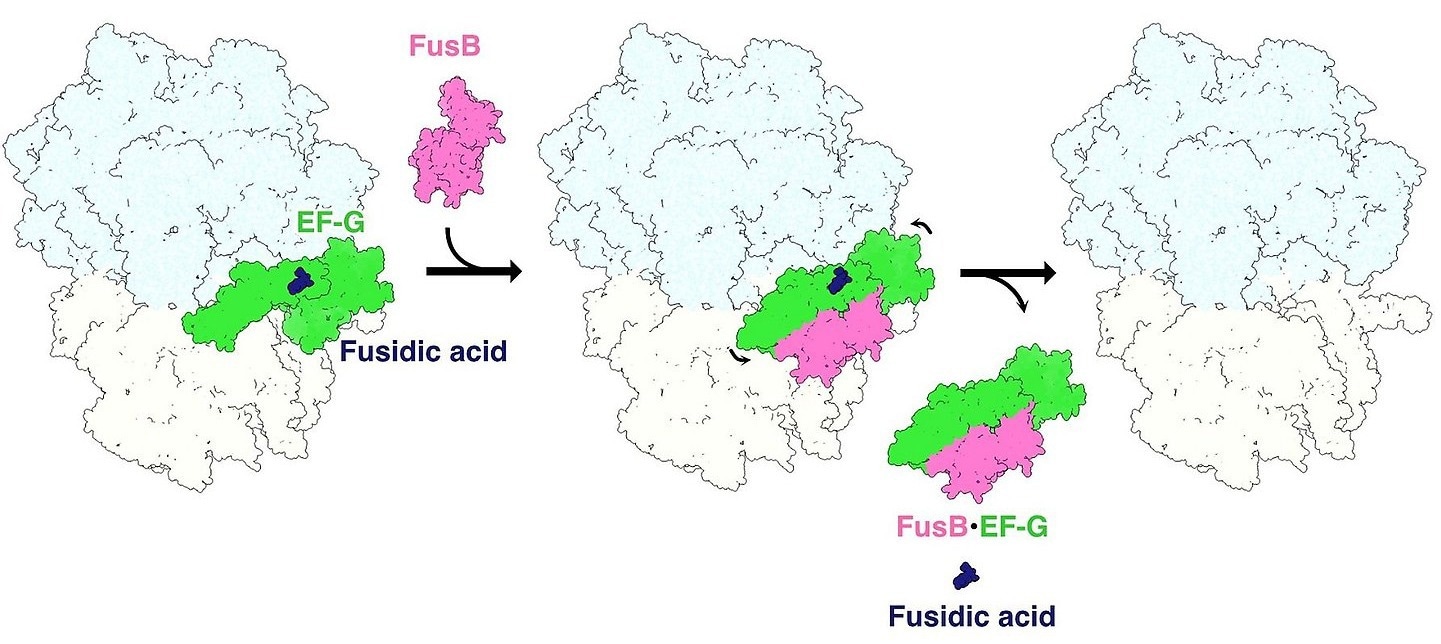Reviewed by Lexie CornerMay 19 2025
In a new study published in Nature Communications, researchers from the Uppsala Antibiotic Center, Uppsala University, and SciLifeLab propose a key mechanism behind antibiotic resistance. What happens when a bacterium becomes resistant to the antibiotic fusidic acid? The team demonstrates - using an atomic-level stop-motion model - that the resistance protein FusB functions much like a molecular crowbar.
 Schematic figure of the fusidic acid resistance “stop-motion” movie. Image Credit: Uppsala University
Schematic figure of the fusidic acid resistance “stop-motion” movie. Image Credit: Uppsala University
Antibiotic resistance is a global challenge that requires coordinated action and research across multiple levels. This study focuses on the molecular mechanism behind the most common form of fusidic acid resistance in Staphylococcus aureus.
Antibiotics work through various mechanisms. Fusidic acid, for example, targets harmful bacteria by disrupting their ribosomes - the molecular machines responsible for translating genetic information into proteins. Bacteria can resist antibiotics in several ways, including drug efflux or chemical deactivation. However, some resistance strategies are more complex and highly specific.
The mechanism behind fusidic acid resistance has been a long-standing mystery.
Maria Selmer, Professor and Antibiotic Resistance Researcher, Uppsala University
In a recent study, researchers found that FusB - a resistance protein identified in clinically resistant strains of Staphylococcus aureus - can shield ribosomes from the effects of fusidic acid. Using electron microscopy, they showed that FusB functions like a molecular crowbar, dislodging the antibiotic-bound ribosome. The team described their findings as a “stop-motion movie” captured at the molecular level.
With traditional methods, we would be too late to the 'crime scene'. Thanks to this methodology, we could catch the resistance protein in the act, right as the 'crowbar' is 'breaking into' the molecular complex.
Adrián González López, Ph.D. Student, Department of Cell and Molecular Biology, Uppsala University
Source:
Journal reference:
González-López., A. et al. (2025) Structural mechanism of FusB-mediated rescue from fusidic acid inhibition of protein synthesis. doi.org/10.1038/s41467-025-58902-3.